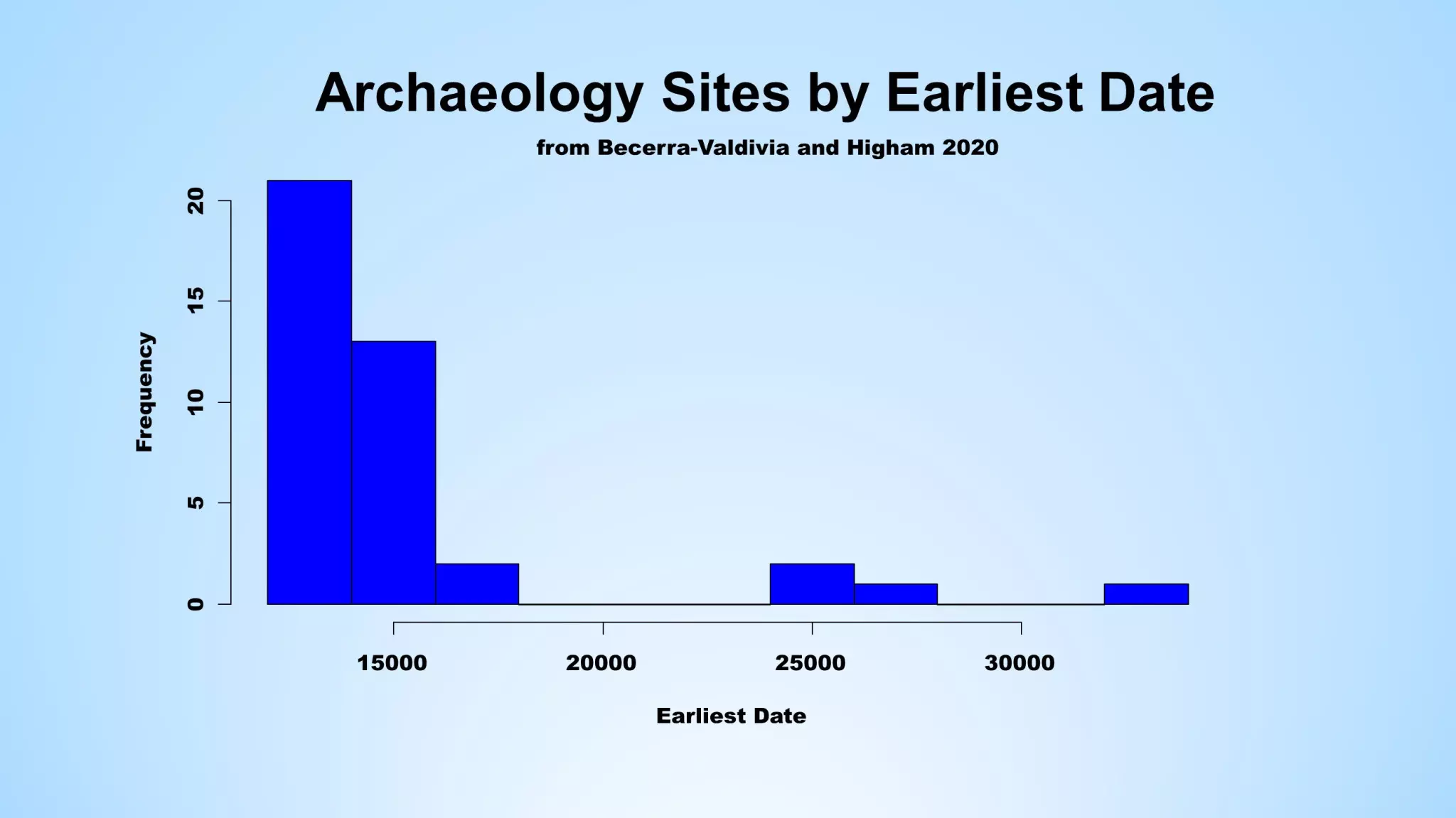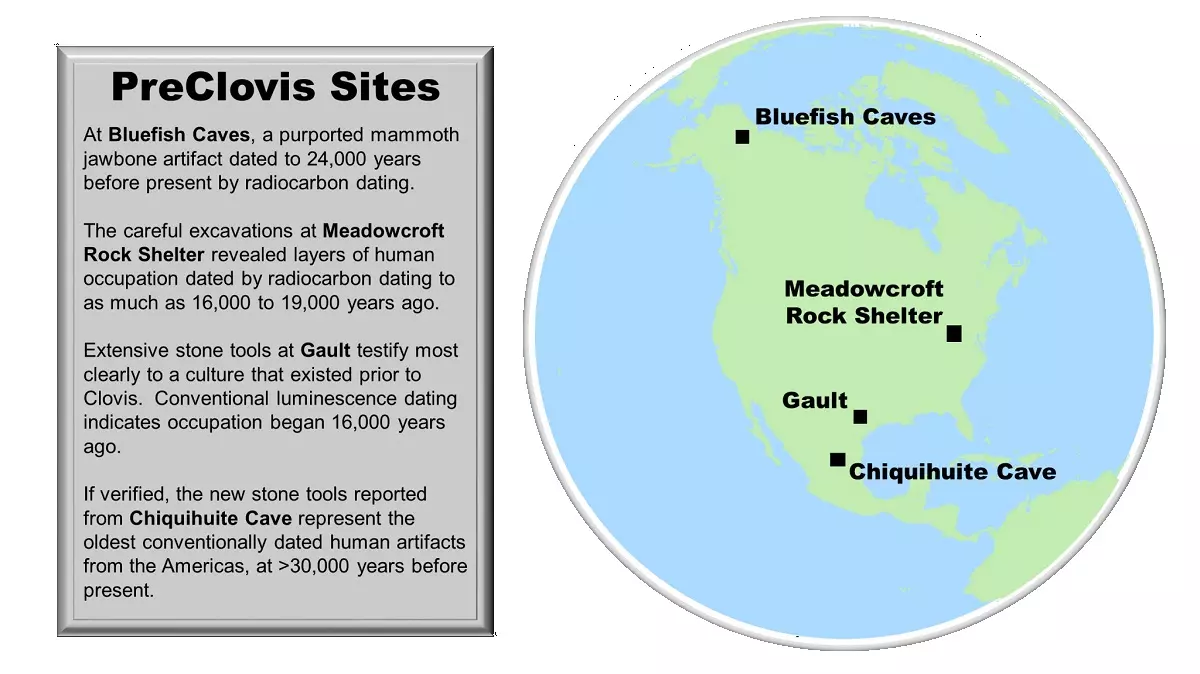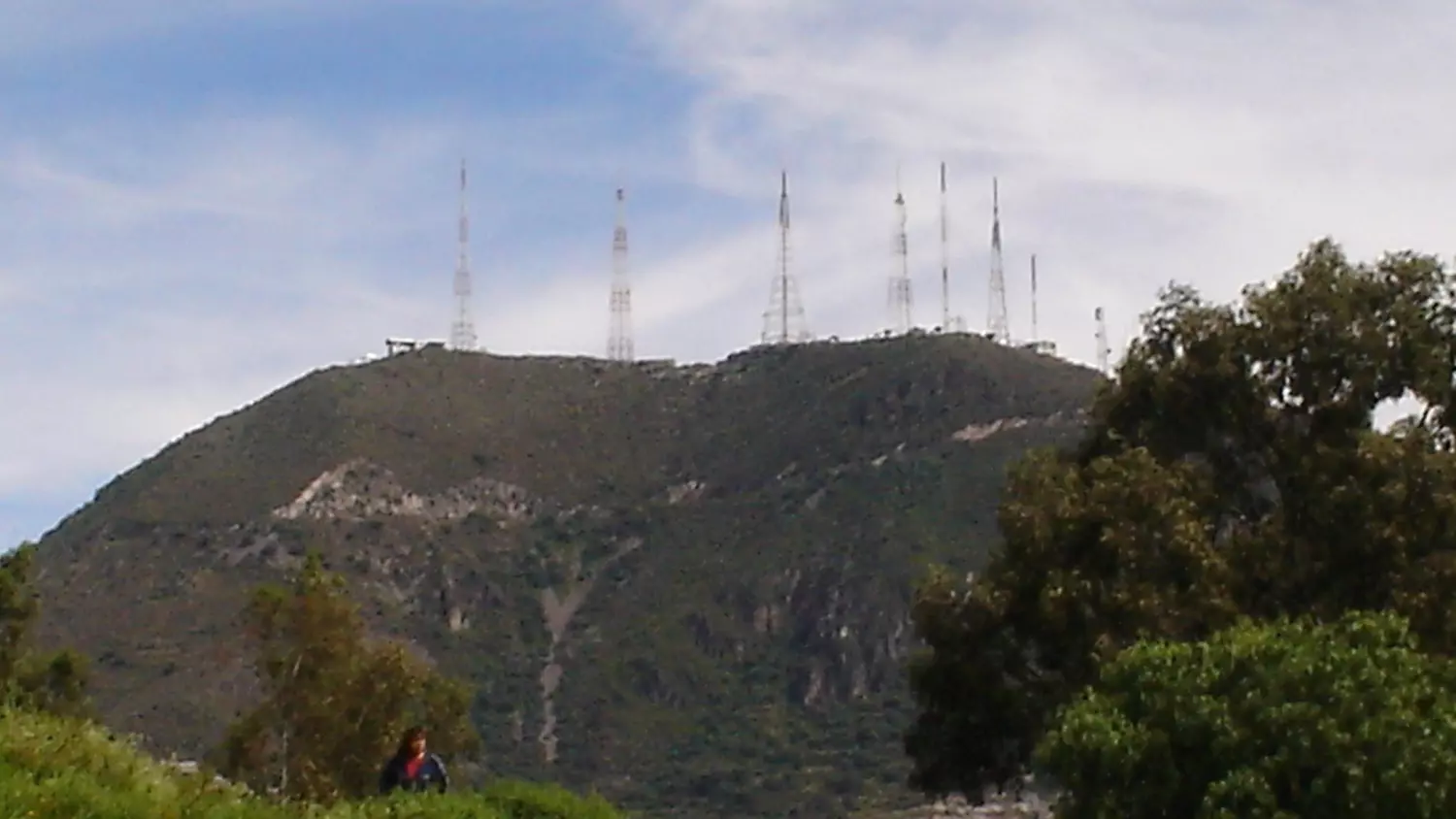[Originally published as Earliest Americans in a Mexican cave?]
The peopling of the Americas is not a topic I address often, but every now and then, new data come to light that draws my attention. In July 2020, Nature published a report from Ciprian Ardelean and a team of 27 colleagues that presented a new cache of stone tools found in a cave in central Mexico.
What made this report so noteworthy is their conventional dating of the lowest tools: around 30,000 years before present!
The story of this discovery’s significance begins
about 700 miles north, in the small town of Clovis, NM. The stone tools discovered nearby at a locality called Blackwater Draw came to be understood as the oldest culture in the Americas. Conventionally dated around 12,000 years before present, the makers of these stone tools came to be called the Clovis culture.
For many years, they were assumed to be the first and oldest people of the Americas.
More recently, discoveries at sites like Gault in Texas and Meadowcroft Rockshelter in Pennsylvania challenged the primacy of the Clovis culture. Both sites have provided evidence that the occupation of the Americas may go back substantially before the Clovis culture, possibly as far back as 19,000 years ago on the conventional calendar. Less well-defined evidences from across the Americas (isolated hearths or individual modified bones) also testified to a human presence on the American continents substantially before Clovis.
These new stone tools add to the evidence of pre-Clovis people in a dramatic fashion. In the mountains above Concepción del Oro, Zacatecas, Mexico, the Chiquihuites Cave [in the mountain shown above] floor sediments hold thousands of stone tools. They come in a variety of forms, including the biface-type, which indicates careful planning and forethought in their creation. They’re also made of a fine-grained limestone not found in the cave itself. Someone brought that material into the cave, possibly to manufacture tools in the shelter of the cave.
How to Date a Rock Tool
To date the finds, the research team first noted that the layering divided itself neatly into two large groups, which they labeled SC-B and SC-C (SC-A was the surface). The upper layers of SC-B and the lower SC-C layers are separated by a distinctive orange layer of carbonate mud. The top layer of SC-C just below this orange mud had a densely-packed surface, implying that it had been packed down before getting buried. Layers from the upper SC-B sediments contained the majority of the tools, but the lower SC-C sediments also had 239 stone tools.
Next, they did 46 different radiocarbon dates to create a chronology throughout their sediments. The results implied that the upper SC-B layers dated to 13,000 to 16,000 radiocarbon years before present, but the lower SC-C layers had carbon dates from 24,000 to 36,000 years before present! Even if the SC-C stone tools were made at the most recent date, that’s still 5,000 years before the oldest remains at Gault and twice as old as the Clovis material from Blackwater Draw.
Predictably, news reports accompanying the announcement expressed skepticism…
about the find (here and here). The comments largely consist of specialists questioning whether the handful of artifacts depicted in the paper’s photographs are actually stone tools. Loren Davis, of Oregon State University, was quoted saying,
You have to basically demonstrate beyond a shadow of doubt that these things can’t be made naturally, and when I look at the images—and that’s all I have to work with—I’m not convinced.
Well, I haven’t seen the items in person either, but they sure look like stone tools to me.
Accompanying the research report is a review of Clovis and pre-Clovis sites from Lorena Becarria-Valdivia and Oxford professor Thomas Higham. They attempted to create a model of the settlement of the Americas based on 42 North American sites, including Chiquihuite Cave. They concluded that people were definitely present much earlier than Clovis but became more widespread after 13,000 conventional years ago.
If we look at the earliest dates for each site in their dataset, we can see that most are clustered around 15,000 years ago, and only a handful extend the chronology to before 20,000 conventional years ago. Two of those sites are the aforementioned Gault and Meadowcroft Rockshelter. A third comes from the Yukon where researchers discovered a mammoth jaw that had been intentionally modified. The jaw was carbon dated to about 24,000 years ago. Despite the paucity of these very early sites, they are nevertheless geographically spread out across the North American continent.
Preflood?
What does this mean for young-age creationism? Whenever I talk about cave remains the first question people want to know is whether or not people might have been using the cave before the Flood? In this case, I feel quite sure that that is not correct: Chiquihuite Cave is carved into Jurassic limestone. Since “Jurassic” rocks are almost universally understood to be formed during the Flood, the cave must have been carved out of those Flood-formed rock layers during or after the Flood.
So these stone tools, however old they really are, must come from after the Flood.
What about the carbon dates? Creationists have long maintained that the concentration of radioactive carbon in the atmosphere (which is the source of the radiocarbon dates) was much, much lower before and immediately after the Flood. As time went by after the Flood, radioactive carbon built up in the atmosphere, which implies that things that date to 30,000 years old are probably not nearly that old.
How old exactly are they? At this point, we can only guesstimate, but I’m not the guy to try to guesstimate. They’re older than Clovis and Blackwater Draw. That’s about all I want to say about their chronology.
How People Moved Around the Continent
Regardless of when, I definitely think this discovery might help us understand more about how the Americas were originally settled. The conventional model asserts that humans probably dispersed after the Last Glacial Maximum at a time when an ice-free corridor opened up between what is today Alaska and the lower 48.
I personally have wondered why people couldn’t have just followed the coast, possibly even in boats? We know from other evidence that “early” (post-Flood) humans have impressive sea-faring skills (see this post, this post, and this post), so why wouldn’t people who primarily lived off the sea spread down the coast of the Americas much earlier than expected?
Discoveries like Gault, Meadowcroft Rockshelter, and Chiquihuite Cave add evidence to that model. In these very isolated, landlocked sites, we do find limited evidence of an earlier human occupation than Clovis.
Could there be anything earlier? The discoverers of the Cerutti mastodon say YES, but that’s a story for another post. Stay tuned!
References
Ardelean et al. 2020. Evidence of human occupation in Mexico around the Last Glacial Maximum. Nature DOI: 10.1038/s41586-020-2509-0.
Becerra-Valdivia and Higham. 2020. The timing and effect of the earliest human arrivals in North America. Nature DOI: 10.1038/s41586-020-2491-6.







